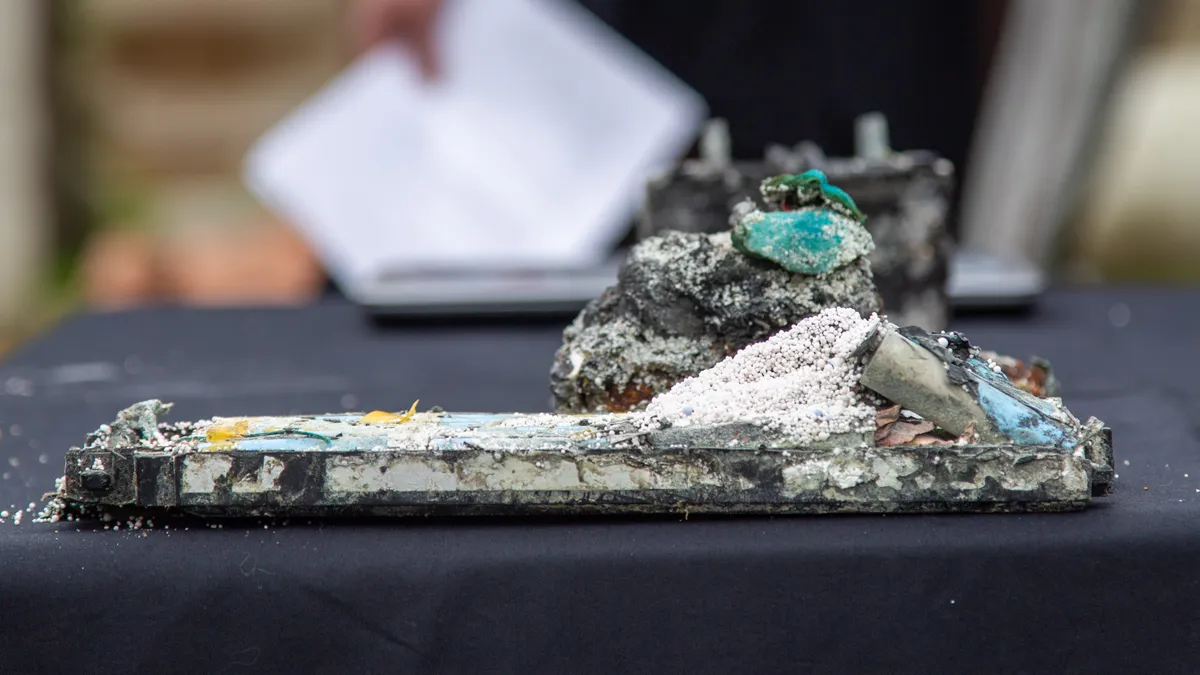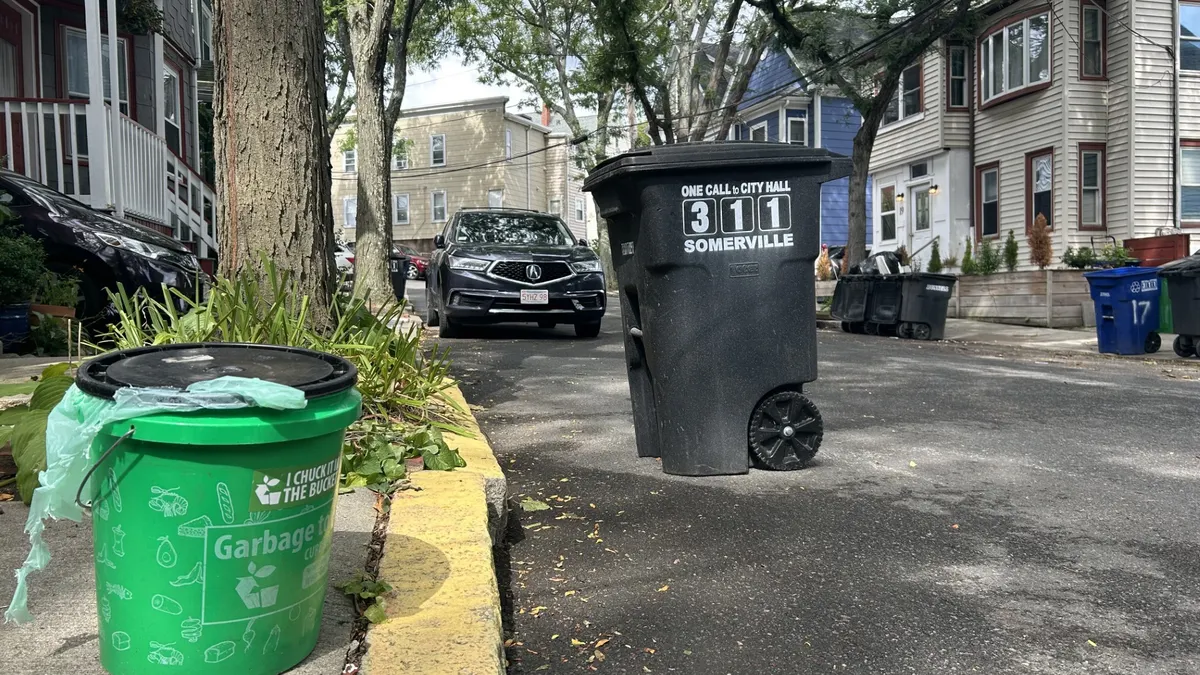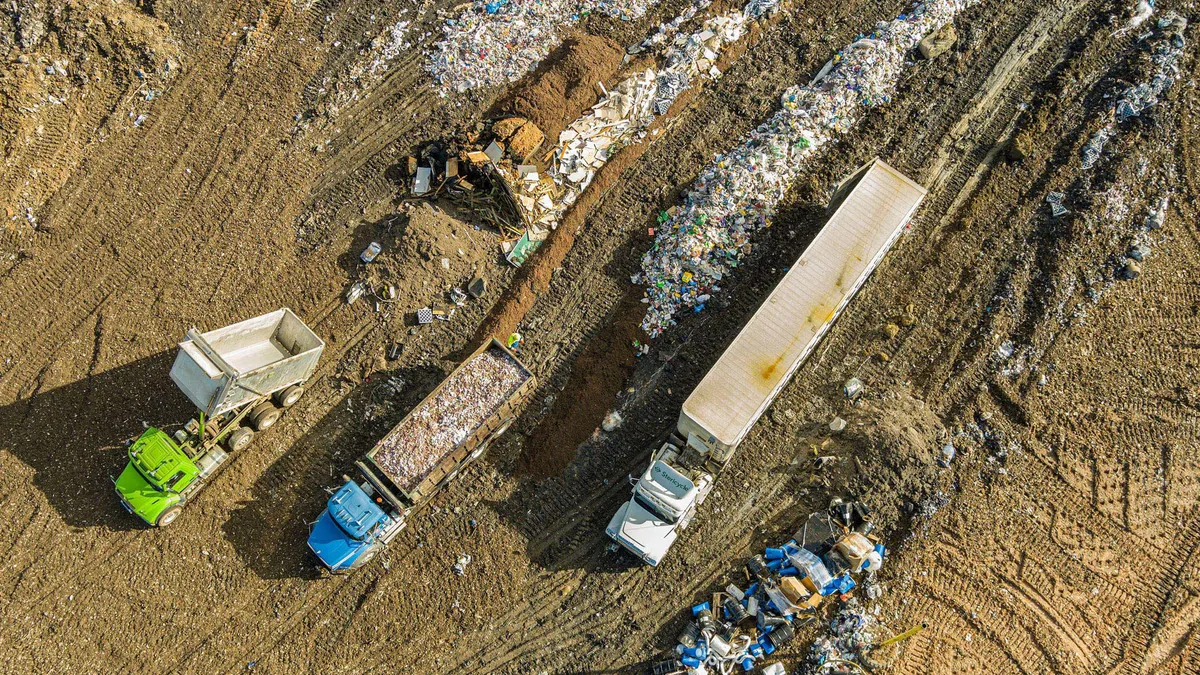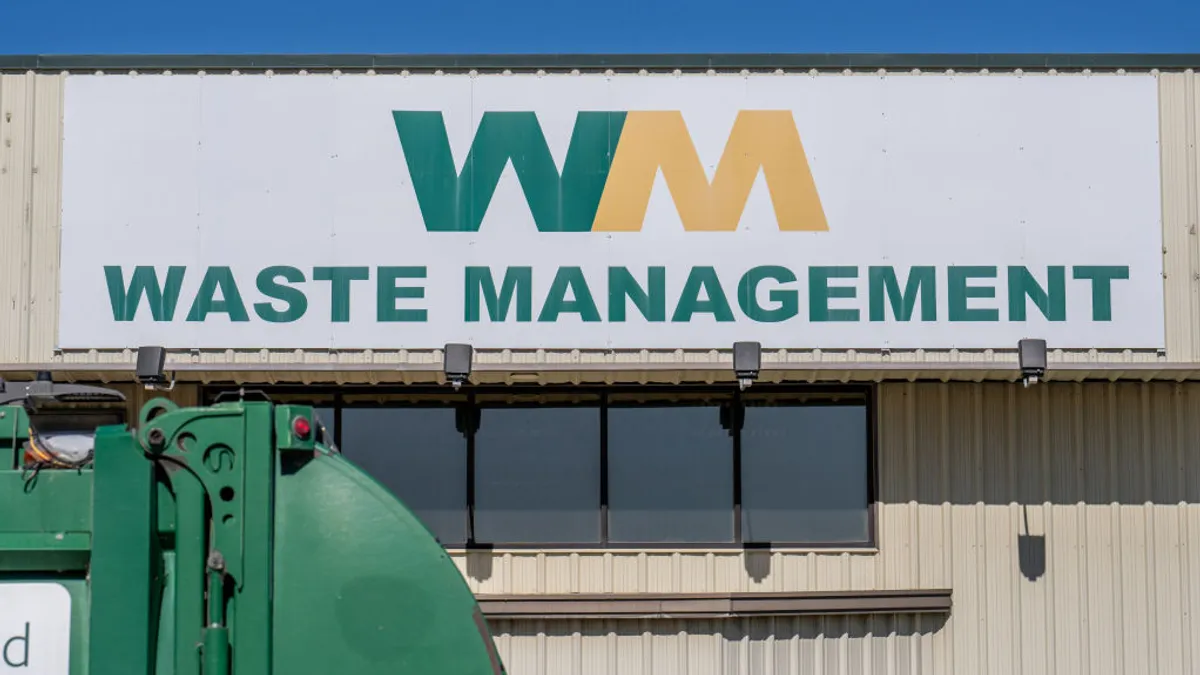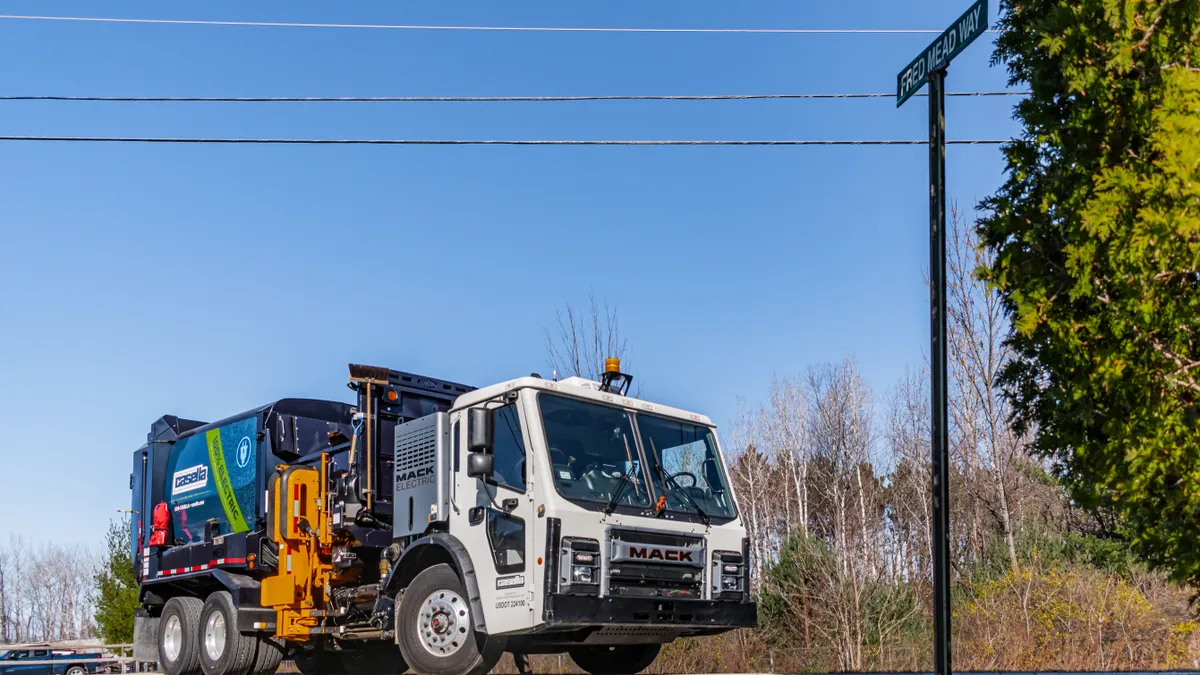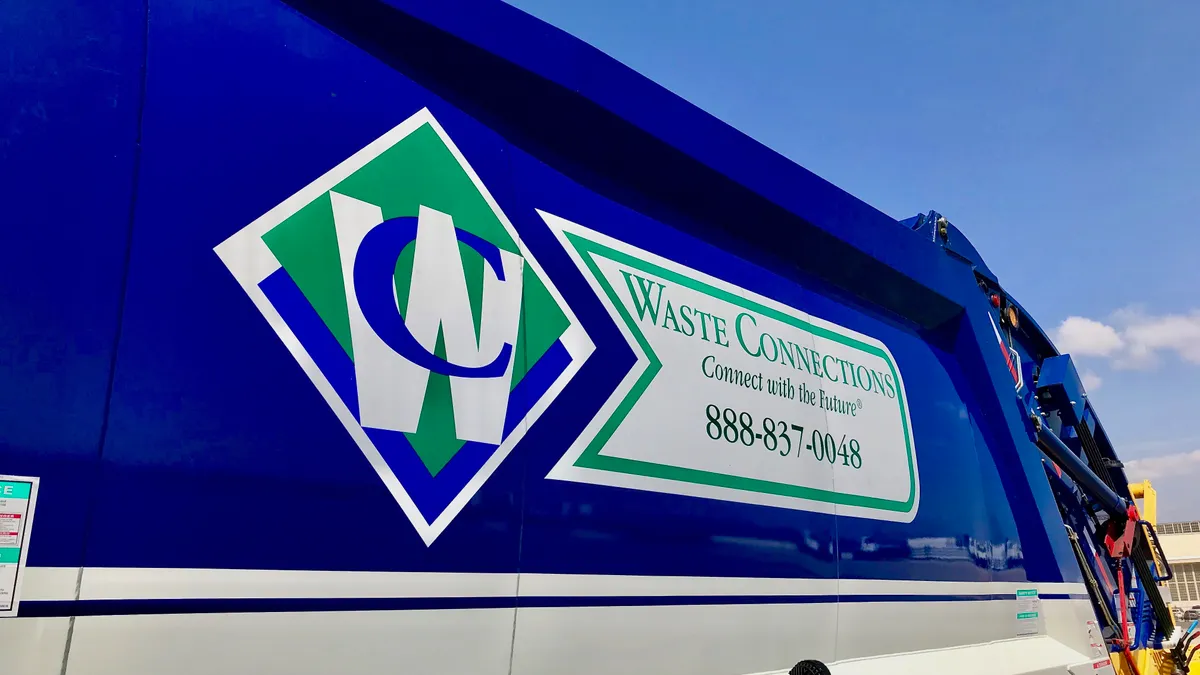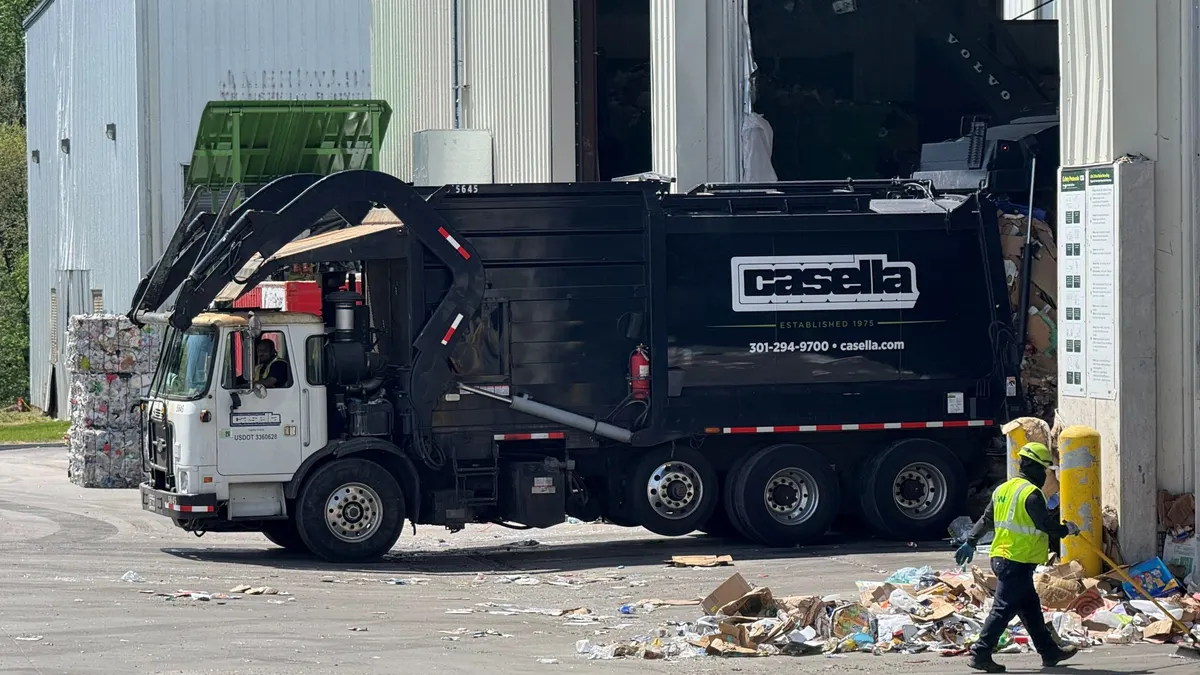Preventing battery-related fires has long been a concern in the industry, and evolving conversations at WasteExpo this year underscored the need for numerous, overlapping tactics to keep batteries from entering trucks or facilities.
Panelists throughout the conference, held May 5-8 in Las Vegas, stressed the need for coordinated remedies. That includes installing new technologies, adopting targeted education campaigns and renewing industry efforts to engage with manufacturers on safer product designs. Speakers also acknowledged the conversation has come up numerous times at the convention throughout the years, and stressed that continued communication and cooperation with entities outside the waste and recycling sphere is necessary to make headway.
“At the end of the day, there is no one easy fix,” said Edel Rodriguez, vice president of sales for equipment manufacturer Steinert US.
Technology is one piece of a larger puzzle
Recent advancements in technology have helped identify batteries as they’re about to enter trucks, transfer stations or MRFs. Several companies now offer sorting systems equipped with X-ray technology meant to identify hazards like batteries, while others offer truck-mounted equipment that can see such hazards from curbside bins, speakers said.
Rumpke Waste & Recycling recently installed an X-ray system at its Cincinnati MRF, and that equipment has so far identified as many as 110 hazards a day. It’s dramatically decreased the number of batteries that move further into the MRF, said Jeff Snyder, Rumpke’s senior vice president of recycling and sustainability. Yet the machinery has its limitations: The X-ray is installed only on one half of the facility and still requires someone to pull the battery off the conveyor by hand, he said.
Even the most accurate X-ray technology won’t cure the root causes of battery fires at MRFs and other facilities, he said. “It's really about getting to those batteries before they get into our trucks. How do we get the public to do the right thing? Communication is a big, big deal.”
Making awareness campaigns personal
Effective communication around battery disposal goes beyond a blanket message to the public, said Genevieve O’Sullivan, chief of communications at the National Waste & Recycling Association. Simply informing residents not to put batteries in their bins can be impersonal and abstract. However, “explaining that batteries can hurt your garbage truck driver is a [message] that resonates, because [the public] has a lot of care and respect for that work.”
Personalized messages go hand in hand with larger, long-term campaigns, speakers said. NWRA recently announced it will roll out an education campaign in partnership with the U.S. Forest Service. That campaign will focus on safe battery recovery, as well as other responsible recycling messaging.
Technology can also play a role in making recycling messaging more personal, said Penny Lane Case, co-founder and CEO of at Nexstera Tech, a company that develops bin and cart monitoring systems. Such technology can note contamination in a specific bin and send a detailed message about it to the customer.
“A big part of what we're doing when we build this technology is actually communicating directly with the offender, so they are being educated at a household or commercial customer level,” she said.
That targeted education must go hand in hand with “broader scale, long-lasting campaigns to really drive generational change,” she said.
Targeted educational campaigns are also important in hospitals and medical centers, said Darrell Oman, principal engineer at consulting firm Braun Intertec. Workers at these facilities may face confusion over the correct recycling methods in addition to navigating hospital-specific regulations related to hazardous waste and medical waste, he said.
Service providers who collect medical waste must communicate more frequently with their hospital clients, he said. Different medical facilities have vastly different policies and practices for managing batteries, and both parties need to understand the systems, as well as the possible safety and liability concerns when batteries aren’t properly recycled.
“Often, they don't know what they don't know. And that could cost them," Oman said.
Advocating for better policy and device design
Design for recycling efforts are another important avenue to increase worker safety while also increasing battery recycling. Numerous speakers called for working with manufacturers to make products with batteries that are easily removable.
A subcommittee of NWRA’s Healthcare Waste Institute has conducted outreach to healthcare device manufacturers about designing more recyclable and safer battery systems, said Cara Simaga, senior director of regulatory affairs at Stericycle and a regulatory liaison for the institute. Stericycle was acquired by WM last year, and the healthcare waste company is now also known as WM Healthcare Solutions.
However, some devices are designed with hard-to-access batteries meant to meet regulatory requirements for patient safety, she said. “They want to ensure the device functions for the patient” while also preventing patients from accidentally knocking out batteries.
Making medical device batteries easier to remove could also reduce the time hospital employees spend on properly packaging the items for disposal, while also reducing possible exposure to pathogens or other medical waste, said Mo Azose, Stericycle’s vice president of operational environmental health and safety.
“It would be great if the manufacturers made it with a little chamber to pop the battery up. Then the battery goes to the recycler, no problem,” said Azose.
The concept goes beyond medical equipment, said Kristin Fitzgerald, an environmental protection specialist with the U.S. EPA’s Office of Resource Conservation & Recovery. Vapes, also called e-cigarettes, typically have non-removable batteries. More and more vapes enter the waste stream each year, and while these products are designed to look trendy, they’re not designed to be recyclable.
“That’s such a big barrier,” she said. “These batteries can be recyclable if you can get them out, but it’s not usually worth the time.”
Some U.S. vape shops currently advertise themselves as locations for vape take-backs, but in general, there’s a lack of recycling infrastructure for the devices. “If a shop is guaranteeing they’ll get recycled, be skeptical,” she said.
O’Sullivan pointed out that Canada has a more established vape recycling infrastructure, in part because of different regulations and extended producer responsibility programs.
Some U.S. states hope to follow suit. California lawmakers this year introduced a bill that would establish an EPR program for household hazardous waste. That bill, as currently written, includes vapes.
Some speakers have called for waste and recycling industry players to get more involved in battery EPR discussions, noting that industry voices are necessary to create laws that protect healthcare workers, waste workers and the public while increasing battery recycling. NWRA has said it supports battery EPR programs because of longtime battery fire issues in the industry.
“That’s really the key here,” Azose said.
Disclosure: Informa, which owns a controlling stake in Informa TechTarget, the publisher behind Waste Dive, is also the owner of WasteExpo. Informa has no influence over Waste Dive’s coverage.



